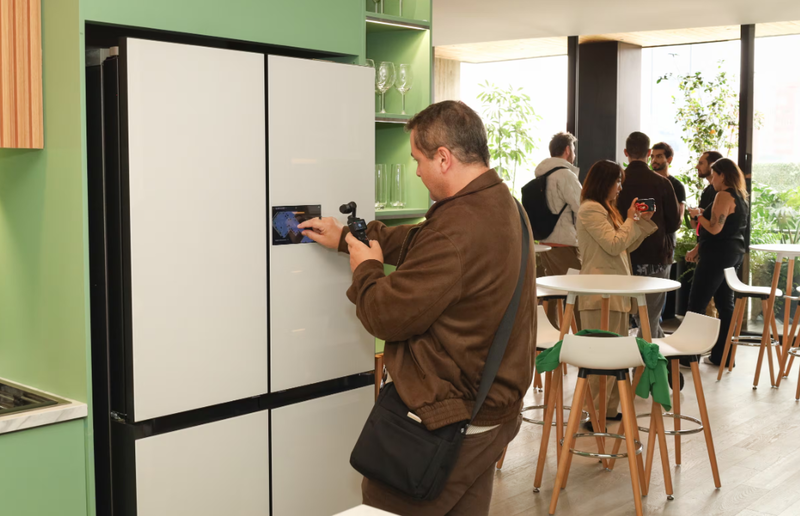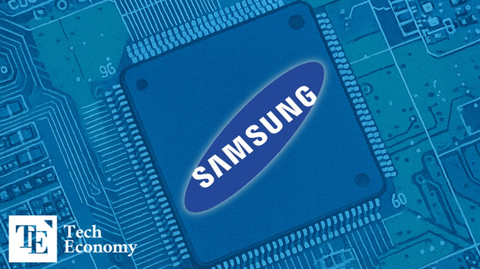“Top Position in Home Appliances Shaken” — Samsung Electronics’ Projected Q2 Loss Fuels Growing Doubts About Competitiveness
Input
Modified
Profitability Gap Widens Compared to Competitors Concerns Raised Over Promotional and Fixed Costs Can the Star Actress Strategy Work Amid Chinese Onslaught?

Samsung Electronics, once confident in its leadership in specific home appliance categories, is now facing grim forecasts from the financial sector, suggesting its home appliance business will post losses in the second quarter of 2024. Despite a broader industry slump, rival LG Electronics continues to post solid profits—with an operating margin of around 10%—fueling growing doubts about Samsung’s fundamental competitiveness in this sector.
Financial Analysts Predict Q2 Losses for Samsung’s Home Appliances
According to industry sources on June 17, multiple domestic securities firms are issuing pessimistic outlooks on Samsung’s Digital Appliances (DA) division. A recent report by IBK Investment & Securities projects a Q2 operating margin of -0.2% for Samsung’s home appliance business. Following Q4 2023’s -2.0% and Q1 2024’s -0.5%, this would mark the third consecutive quarterly loss.
Eugene Investment & Securities also estimates an operating margin of 0%, effectively projecting no profit for Q2. It forecasts Samsung's full-year operating margin to hover around zero. Since Samsung does not disclose individual performance figures for its home appliance and TV divisions, investors rely heavily on these estimates. Given that the first half of the year is typically a high season for the appliance industry, remaining in the red or barely breaking even during this period indicates a concerning trend of “low-high-low” performance.
Meanwhile, Chinese competitors are rapidly expanding their presence. Haier, a leading Chinese appliance maker, reported Q1 revenue of USD 11 billion and a net profit of USD 766 million, reflecting year-on-year growth of 10.1% and 15.1%, respectively. Analysts attribute this to its aggressive M&A strategy, including the acquisition of GE Appliances, supported by strong capital and production capabilities. With Chinese brands like TCL and Hisense already dominating the TV market, industry watchers warn it's only a matter of time before Chinese firms extend that dominance to the premium appliance sector.
LG’s Profitability Backed by B2B Expansion
Industry insiders believe Samsung’s push for market share has come at the cost of profitability due to heavy spending on marketing and promotions. One source noted, “With global demand for appliances waning and competition from Chinese brands intensifying, Samsung is under immense pressure. Despite Samsung and LG having similar market shares in domestic and North American markets, the profitability gap suggests Samsung is relying heavily on price discounts and promotions.”
Samsung’s vast global manufacturing and sales operations also carry high fixed costs, meaning the company must maintain strong sales volumes to remain viable. But expanding market share without profit guarantees can be counterproductive.
In stark contrast, LG’s strength in the appliance sector is more pronounced. Its Home Appliance & Air Solution (H&A) division posted a 9.6% operating margin in Q1 2024. Analysts expect LG’s margin to remain above 7% in Q2, with IBK forecasting 8.0% and Eugene Investment projecting 7.5%. For the full year, LG’s margin is expected to stay around 6%.
LG’s success owes much to its growing focus on B2B (business-to-business) segments. The company has expanded beyond home appliances into commercial displays, automotive components, and HVAC (heating, ventilation, and air conditioning) systems—areas less affected by seasonality and with more stable, order-based revenue. LG even launched a dedicated B2B website to support this strategy.
These efforts are paying off. In Q1 2024, LG posted consolidated revenue of USD 16.54 billion and operating profit of USD 916 million, largely driven by B2B growth. Key contributors included its Vehicle Component Solutions (VS) and Energy Solutions (ES) divisions, both of which recorded their highest-ever quarterly revenue and profits. Their combined operating profit surged by 37.2% year-on-year. One industry insider noted, “B2C business is volatile, seasonal, and highly competitive. Without a solid B2B foundation, LG’s overall performance could have suffered.”

Samsung Brings Back Former Star Actresses Amid Appliance Slump
In contrast, Samsung continues to rely on a B2C (business-to-consumer) model. Facing a sharp drop in appliance sales, the company has turned to nostalgic advertising campaigns featuring former star actresses Jun Ji-hyun and Han Ga-in—an apparent attempt to reignite brand sentiment and consumer trust.
This move appears aimed at middle-aged buyers in their 30s to 50s, who are seen as valuing reliability and familiarity over innovation. However, industry voices question whether such emotional campaigns can significantly boost sales amid current challenges, including a global economic slowdown, shrinking consumer spending, and a rising preference for cost-effective products.
Samsung had focused on premium models such as Bespoke refrigerators and Grande washers, but in a downturn, consumers prioritize value over luxury. The brand’s high-end strategy has thus diverged from actual market demand. Chinese competitors, such as Haier and Midea, have also gained ground, leveraging technological advancements and aggressive pricing to erode Samsung’s market share in North America and Europe.
Experts caution that while emotional marketing may offer short-term attention, sustainable recovery requires a blend of price competitiveness, product diversification, and technological innovation. One industry figure summed it up: “We’re past the era where technology alone wins the white goods race. Without simultaneously delivering on price, quality, and emotional appeal, customers will simply walk away.”




















